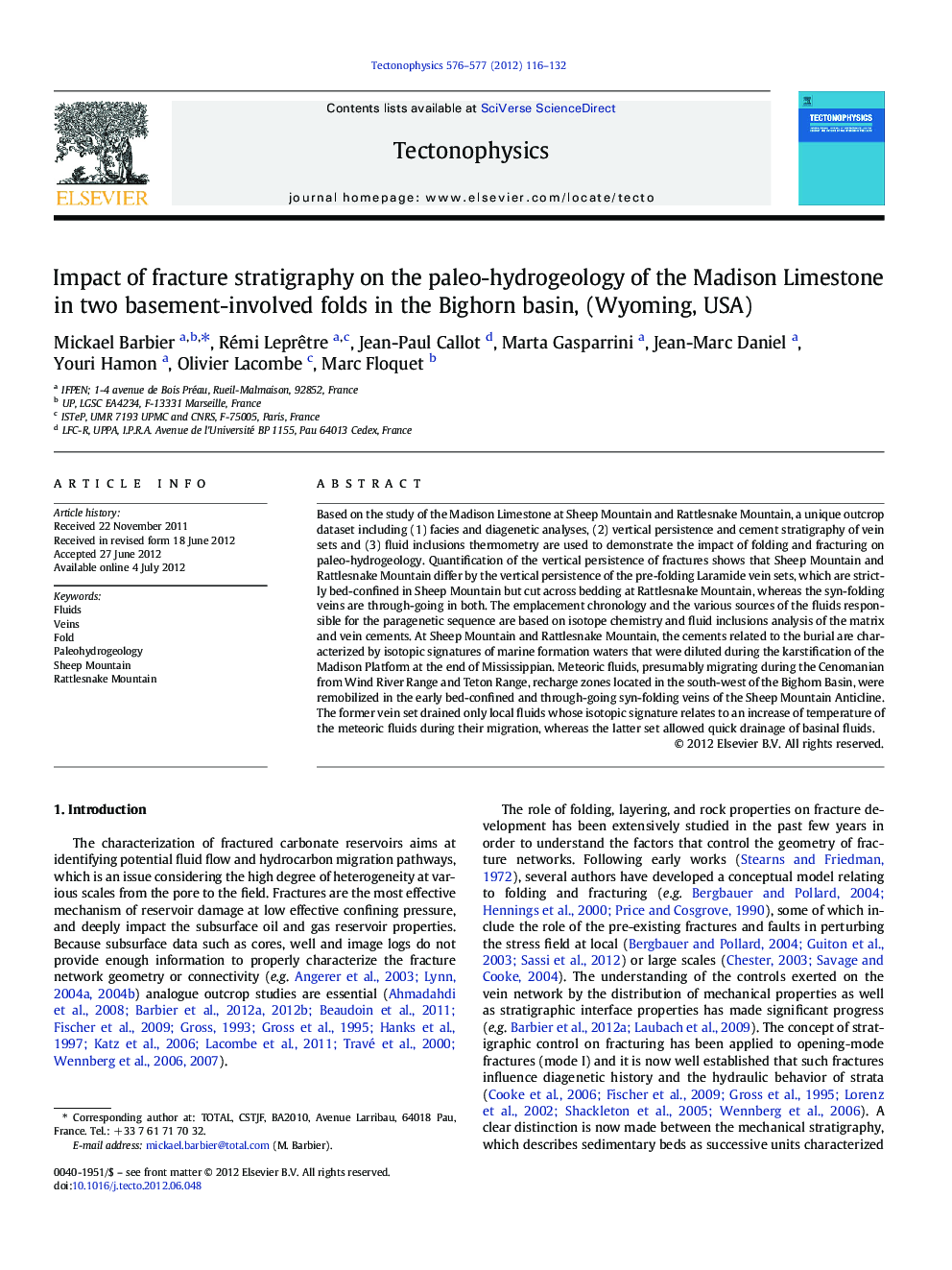| کد مقاله | کد نشریه | سال انتشار | مقاله انگلیسی | نسخه تمام متن |
|---|---|---|---|---|
| 4692676 | 1636808 | 2012 | 17 صفحه PDF | دانلود رایگان |

Based on the study of the Madison Limestone at Sheep Mountain and Rattlesnake Mountain, a unique outcrop dataset including (1) facies and diagenetic analyses, (2) vertical persistence and cement stratigraphy of vein sets and (3) fluid inclusions thermometry are used to demonstrate the impact of folding and fracturing on paleo-hydrogeology. Quantification of the vertical persistence of fractures shows that Sheep Mountain and Rattlesnake Mountain differ by the vertical persistence of the pre-folding Laramide vein sets, which are strictly bed-confined in Sheep Mountain but cut across bedding at Rattlesnake Mountain, whereas the syn-folding veins are through-going in both. The emplacement chronology and the various sources of the fluids responsible for the paragenetic sequence are based on isotope chemistry and fluid inclusions analysis of the matrix and vein cements. At Sheep Mountain and Rattlesnake Mountain, the cements related to the burial are characterized by isotopic signatures of marine formation waters that were diluted during the karstification of the Madison Platform at the end of Mississippian. Meteoric fluids, presumably migrating during the Cenomanian from Wind River Range and Teton Range, recharge zones located in the south-west of the Bighorn Basin, were remobilized in the early bed-confined and through-going syn-folding veins of the Sheep Mountain Anticline. The former vein set drained only local fluids whose isotopic signature relates to an increase of temperature of the meteoric fluids during their migration, whereas the latter set allowed quick drainage of basinal fluids.
► Facies and diagenesis control mechanical stratigraphy and vein network geometry.
► Stable and Sr isotopes allow tracing the fluids source and temperature.
► Vein network connectivity controls fluid pathways and pressure build-ups during folding.
Journal: Tectonophysics - Volumes 576–577, 5 November 2012, Pages 116–132